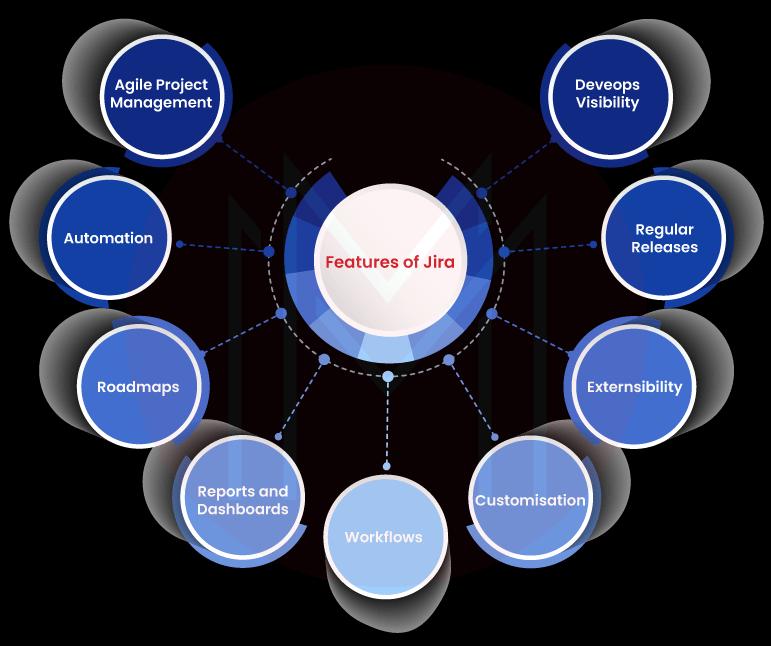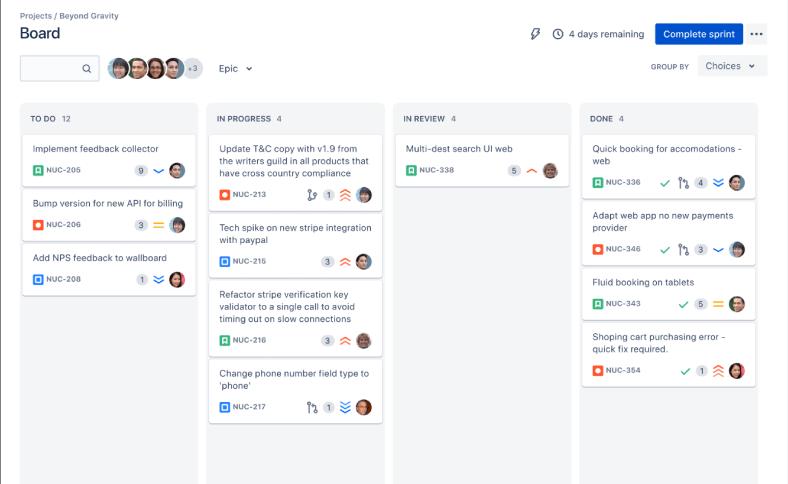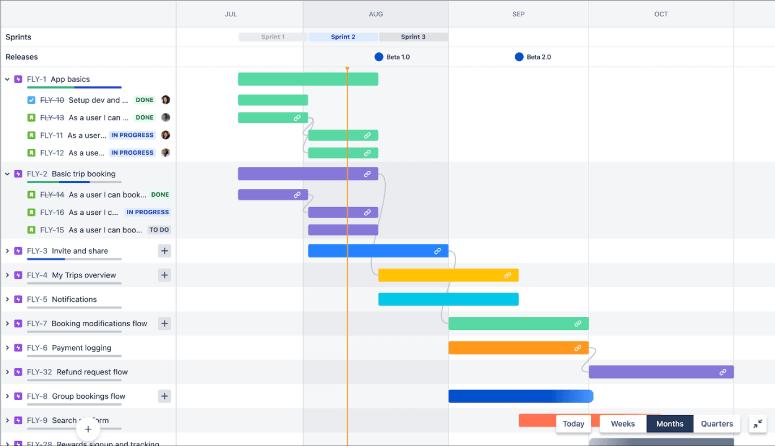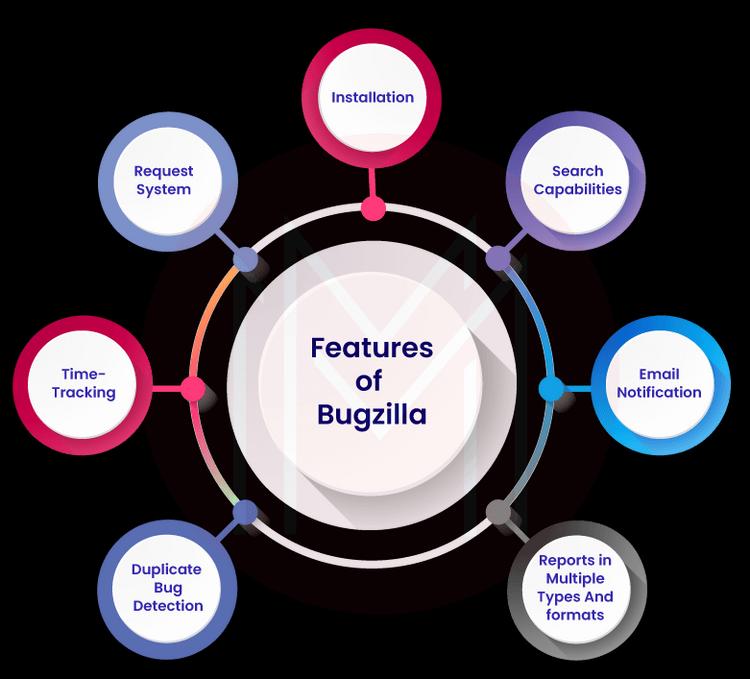- Guide for Installing JIRA Applications on Windows
- Top 5 JIRA Dashboard Gadgets
- JIRA Interview Questions
- Jira Kanban Boards
- JIRA Tutorial - Complete Guide
- JIRA Version History
- JIRA Vs TFS
- Jira vs Trello: Agile Project Management Tools Comparison
- SDLC Interview Questions and Answers
- Tosca Jira Integration
- ALM Octane Tutorial - A Complete Beginners Guide
- How to Install JIRA on Windows
- JIRA Projects
All we will agree that the creation of bugs in software is an inevitable phenomenon. In fact, they have the potential to create significant damages or setbacks in the development process or software maintenance. Therefore, encountering bugs is a crucial task, undoubtedly. As we all know, many tools are available in the market to track and shoot down code bugs. This way, Jira and Bugzilla are one of the key bug tracking tools used widely across many organizations.
Although Jira and Bugzilla have a lot in common, they have a few key differences. This blog addresses the basic functionalities of Jira and Bugzilla, features, and differences in a whole way. Not just that, you can learn a lot along the road.
All you will need is to continue reading the blog.
Jira vs Bugzilla - Table of Contents
- What is Jira?
- History of Jira
- Features of Jira
- Drawbacks of Jira
- Use Cases of Jira
- What is Bugzilla?
- History of Bugzilla
- Features of Bugzilla
- Drawbacks of Bugzilla
- Use cases of Bugzilla
- Differences Between Jira and Bugzilla
What is Jira?
Jira is one of the tools used for tracking bugs in software. It is an all-in-one tool that you can use to plan, track, test, release, report, and automate software projects. In addition to bug tracking, Jira is considered one of the highly recommended agile project management tools. Simply put, Jira acts as the central hub for the coding, collaborating, testing, and releasing stages of agile projects. As a whole, Jira helps to improve the quality of agile projects with quick delivery.
Know that Jira is a suite of products that track bugs and manage any project. The family of Jira includes Jira Work Management, Jira Software, Jira Service Management, and Jira Align. Here, Jira work management is used to manage business projects. Jira Software manages both standard and agile software projects. Jira service management manages IT operations and business service tasks. Nevertheless, Jira Align handles strategic product and portfolio management.
| This topic is crucial in the Jira interview, and our trainer has covered it in-depth in "JIRA Training". |
History of Jira
Created by two students in Australia, Jira was launched as a bug tracking tool in the year 2002. And Jira is the product offered by the company Atlassian. Although Jira was initially developed for bug tracking, it later progressed into a tool that can support planning to deploy a software project. It’s not a surprise that Jira has now evolved into a tool that can support any project – whether it is software or others.
It’s no wonder that Jira can support teams from the size of 2 to 2000 seamlessly, and thousands of companies use Jira for managing their projects. Many businesses use Jira as their project management tool, from finance to retail to HR. It means that DevOps, project management, and software development teams use Jira to identify bugs and manage their projects.
[ Related Article: JIRA Version History ]
What are the Features of Jira?
From project management to regular releases, Jira offers many features to its users. Let’s look at the features of Jira below in detail.

1. Agile Project Management
Jira allows you to plan, track, and manage the team’s tasks and progress. With Scrum and Kanban boards, agile teams can break large pieces of projects into simple tasks, which in turn help to accelerate the progress of projects. Essentially, these boards are task management hub that maps tasks with customizable workflows. Also, they create transparency in the work progress and visualise workflows. Jira offers a drag-and-drop capability to users that simplifies the software development process, undeniably. Overall, Jira increases the efficiency of project management.

2. Automation
One of the prime features of Jira is that it automates repeated tasks. As a result, it helps to gear up work progression.
3. Roadmaps
Basically, roadmaps help to align an individual's tasks with the goals of an organization. With roadmaps, you can visualise and track the progress of works and dependencies concerning the goals. It allows you to take the right decisions at the right time accurately. In this regard, the Gantt chart is used to map dependencies and plan works effectively.

4. Reports and Dashboards
With reports and dashboards, you can get up-to-date information about your project progress along with valuable insights, allowing you to make informed decisions without a doubt. Also, you make dashboards private or public as you wish. Above all, Jira allows you to customise dashboards by adding charts, graphs, filters, and many more.
5. Workflows
Generally, workflows streamline processes across teams with the help of templates. Jira consists of pre-made templates to support all industries such as HR, software, finance, etc. Jira allows you to use pre-made and customised templates based on your needs.
6. Customisation
Without compromising security, privacy, and progress, Jira allows you to customise configuration settings, workflows, permissions, and automation rules.
7. Extensibility
Jira comes with over 3000 integrations and apps as extensions. Apart from these, developers can add plug-ins to extend Jira's features.
8. Regular Releases
Jira increases its capacity over time by regularly developing new tools. No doubt that users can develop robust projects using these new tools.
9. DevOps Visibility
Jira supports improving the interaction between developers and IT teams. So, developers can quickly build, test, and release software without hassles.
What are the Drawbacks of Jira?
Though it is one of the best bug tracking tools, it also has a few drawbacks. Here are the cons of Jira.
- The suite of Jira products is costly and creates confusion among users with the bundle of options attached.
- Setting up Jira is complex for beginners, who usually experience a steep learning curve.
- Jira uses email communication to transfer bug information to users. Jira offers no quick communication. But, at the same time, Jira integrates with external tools to resolve this issue to a certain extent.
- Uploading large-sized files using Jira is not easy since it is limited to certain file sizes.
- Although Jira is ideally one of the best tools for bug tracking, it is not the best project management tool. This is because Jira lacks in assessing risks, managing costs, etc.
What are the Use-cases of Jira?
Let’s learn the use-cases of Jira below:
- Agile Teams: With Kanban and Scrum boards, agile teams can quickly implement agile methodologies. Additionally, agile teams can track the performance of projects with time-tracking and real-time reports.
- Software Development Teams: Jira allows teams to build plans and roadmaps for the entire software development cycle. Not only this, Jira supports managing issues during development as well as deployment.
- Test Case Management: As Jira can be integrated with many testing tools, it helps to improve the quality of software significantly. With custom screens, workflows, and custom fields, Jira helps track bugs effectively.
- Project Management Teams: Any project can be managed by Jira. With dashboards and reports, teams can accurately track issues, performance, progress, and productivity.
Our Jira Training Hyderabad has Detailed explanations and practical examples of the above topic.
Let’s now move on to Bugzilla.
What is Bugzilla?
Bugzilla is nothing but a robust bug tracking tool similar to Jira. Unlike Jira, Bugzilla is free and open-source software. And it needs to be installed on your local servers, and the installation process is usually easy. Bugzilla is a tool that is ideal for website developers. That's why they can track issues, bugs, and changes in their software quickly. Bugzilla comes with adequate features to simplify defect tracking and reduce deployment delays. For this, the reporting and collaboration features of Bugzilla are used significantly.
Bugzilla is widely used across many organizations – mainly the IT and service sectors as a bug tracking tool. For example, we can say Wikipedia, Broadcom, Mozilla, Webkit, free BSD, Apache, KDE, LibreOffice, and many more. Know that over 140 companies are using public Bugzilla installations. And it is mainly used by companies who have more than 1000 employees. Bugzilla can act as the central hub for bug-tracking activities across many projects. That’s why it is widely used in large-scale application developments.
History of Bugzilla
Bugzilla was released in 1998 by the Mozilla foundation. All organizations, companies, and projects can use Bugzilla for bug tracking. Bugzilla was initially written in Tcl language but later converted to Perl. Bugzilla 5.0 is the most recent version of Bugzilla, released in 2015.
What are the Key Features of Bugzilla?
Similar to Jira, Bugzilla also offers many key features to its users.

Let’s discuss them now.
1. Search Capabilities
Bugzilla comes with both basic and advanced searching mechanisms. Using these methods, you can search the details of bugs as you wish. Further, Bugzilla allows you to save the searches that you have made. You can also share these searches with other users for their use.
2. Email Notifications
Generally, Bugzilla sends you emails when there is a change in the tool, or any bugs have been controlled recently in the software. Note that the emails will be sent only based on the preferences that you have set already.
3. Reports in Multiple Types and Formats
Bugzilla creates various reports based on bugs filtered on various parameters. For instance, Bugzilla creates line graphs, pie charts, bar graphs, etc. Bugzilla creates reports in various formats such as HTML, CSV, iCal, XML, and Atom. What’s more! Bugzilla can generate scheduled reports daily, weekly, monthly, etc. And these reports can be sent to individuals and teams by Bugzilla – respecting access control.
4. Duplicate Bug Detection
While searching for a bug using Bugzilla, it automatically tracks the bugs similar to the one you are searching for. And these duplicate bugs will be listed along with the bugs that you are searching for.
5. Time-Tracking
Bugzilla tracks the time taken to fix bugs. Also, you can set deadlines to fix bugs with Bugzilla.
6. Request System
Bugzilla offers the 'request system' that you can use to ask other users to review codes, get information, and so on. But, the important thing is that all the requests must be related only to bug fixing.
[Check out Killer Gadgets for JIRA Dashboards ]
What are the Drawbacks of Bugzilla?
Similar to Jira, Bugzilla also has a few drawbacks on its side. Let’s see what they are:
- Bugzilla doesn’t support agile project development
- Compared to Jira, the learning curve is extra steeper in Bugzilla
- It lacks customisation capabilities
- Tracking workflows is challenging in Bugzilla
- The interface is not so good in Bugzilla. Especially, it still consists of traditional UI and lacks mobile-based UI
- Unlike Jira, reporting tools are not efficient in Bugzilla.
- Users might face difficulty in attaching files. Large files cannot be attached.
What are the Use-cases of Bugzilla?
- Bugzilla provides interactive spreadsheets from which users can get the details of new bug details and other data related to bug tracking.
- Bugzilla's reporting tools help users create custom tables and charts concerning the bug details.
- You can create rule-based access control and advanced search functions in the Bugzilla tool.
The above concept is instrumental while doing implementations across industry projects and is covered in Jira Training Bangalore curriculum.
What are the Key Differences Between Jira and Bugzilla?
Let’s check out the key differences between Jira and Bugzilla as below:
1. Installation: Jira is commercial software, whereas Bugzilla is free and open-source software with no license fee. Jira can be installed in both local servers and the cloud. Mainly, on-premises installation is made for large enterprises. On the contrary, Bugzilla can be installed only on local servers. And you can easily install and maintain Bugzilla.
2. Agile Management: In fact, Jira is a suite of products that perform bug tracking as well as managing projects. In other words, you can plan, develop, prioritize, deploy your projects and get real-time insights in addition to bug tracking. On the other hand, Bugzilla manages only bug tracking. Also, Jira offers Kanban and Scrum boards that offer good visibility across your project and helps to prioritize works. But, Bugzilla lacks these kinds of features. Jira has an easy drag-and-drop option, whereas Bugzilla is not provided with this option.
3. Labels and Flags: Jira uses labels for making quick bug searching along with filters. On the other side, Bugzilla uses flags. And there are two types of flags: attachment flags and bug flags. Here, attachment flags are used to raise a question about a bug, whereas bug flags are used to set a status on a flag.
4. User Interface: Jira uses an intuitive User Interface, which is visually pleasing and improving over time. On the contrary, Bugzilla still uses a traditional UI, which is also not catchy. Besides, no significant improvements are being made to this interface over time.
5. Security: With SSO, automated user provisioning, and enforced MFA, Jira offers robust security features. On the other hand, security in Bugzilla cannot be appreciated.
6. Support: Jira supports users through its internal supporting team. On the contrary, since it is an open-source tool, Bugzilla offers support through forums.
7. Scalability: Jira offers good scalability, allowing expansion from the team size of 2 to 20,000. In simple words, Jira allows scaling smoothly.
Also, Check out ServiceNow vs Jira
Conclusion
Well enough! This blog might have given you a clear picture of Jira and Bugzilla. In short, Jira is good in agile implementation, reporting, and customisation, whereas Bugzilla is good in searching, duplicate bug detection, and time-tracking. Similar to merits, both the tools have a few setbacks aforementioned. However, it is up to the users and developers to choose the right one according to their requirements after weighing them up on all dimensions – No other better way.
 On-Job Support Service
On-Job Support Service
Online Work Support for your on-job roles.

Our work-support plans provide precise options as per your project tasks. Whether you are a newbie or an experienced professional seeking assistance in completing project tasks, we are here with the following plans to meet your custom needs:
- Pay Per Hour
- Pay Per Week
- Monthly
| Name | Dates | |
|---|---|---|
| JIRA Training | Jan 03 to Jan 18 | View Details |
| JIRA Training | Jan 06 to Jan 21 | View Details |
| JIRA Training | Jan 10 to Jan 25 | View Details |
| JIRA Training | Jan 13 to Jan 28 | View Details |

Viswanath is a passionate content writer of Mindmajix. He has expertise in Trending Domains like Data Science, Artificial Intelligence, Machine Learning, Blockchain, etc. His articles help the learners to get insights about the Domain. You can reach him on Linkedin














